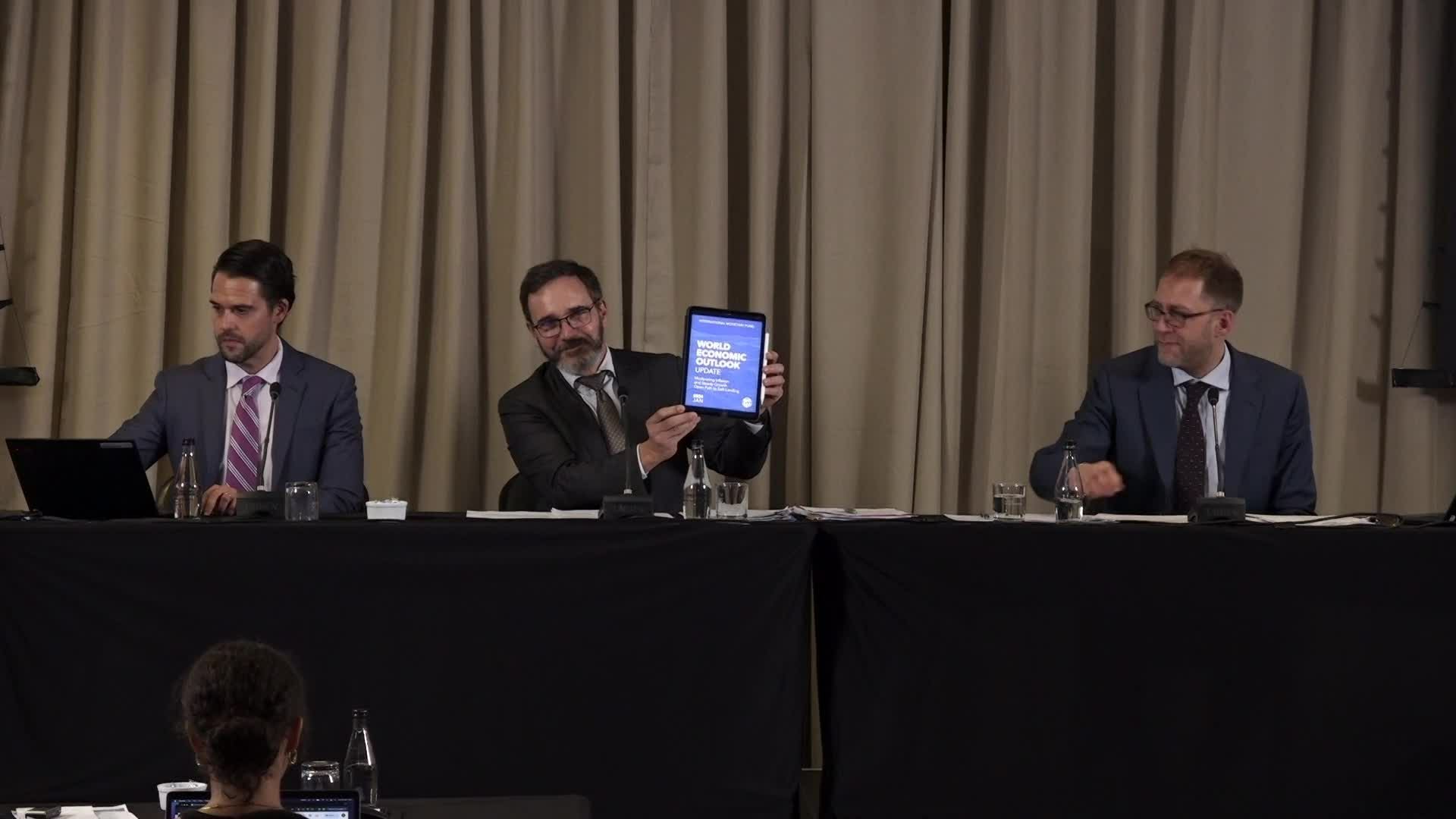The IMF sees a runway to a ‘soft landing’ for global growth Pierre-Olivier Gourinchas, head of the Fund’s Research Department said at the launch of the World Economic Outlook (WEO) Tuesday (January 30) in Johannesburg, South Africa.
“The global economy continues to display remarkable resilience with inflation declining steadily and growth holding up. The chance of a soft landing as increased. But the pace of expansion remains slow and risks remain,” Gourinchas told reporters.
Global growth is projected at 3.1 percent in 2024 and 3.2 percent in 2025, with the 2024 forecast 0.2 percentage point higher than that in the October 2023 World Economic Outlook (WEO) on account of greater-than-expected resilience in the United States and several large emerging market and developing economies, as well as fiscal support in China.
The forecast for 2024–25 is, however, below the historical (2000–19) average of 3.8 percent, with elevated central bank policy rates to fight inflation, a withdrawal of fiscal support amid high debt weighing on economic activity, and low underlying productivity growth.
With disinflation and steady growth, the likelihood of a hard landing has receded, and risks to global growth are broadly balanced.
“Back in beginning of 2023, there were a preponderance of risks to the downside for economic activity and to the upside for inflation. We were seeing maybe inflation being very persistent, that there were a lot of concerns about the fact that the fight against inflation would potentially bring a recession. And one year later, we are in a situation where growth has held steady and inflation has been coming down. So that's certainly a very good development,” said the Fund’s chief economist.
Inflation is falling faster than expected in most regions, in the midst of unwinding supply-side issues and restrictive monetary policy. Global headline inflation is expected to fall to 5.8 percent in 2024 and to 4.4 percent in 2025, with the 2025 forecast revised down.
Gourinchas noted that central banks will be walking a narrow path in their goal to rein in inflation while ensuring continued economic growth.
“So we are seeing potential for maybe if central banks remain too tight for too long, there could be a slowdown in economic activity or if there is a tightening of financial conditions or if there is another round of supply shocks, for instance, there could be downside to the global economy. But there can also be upside to the global economy. Inflation could be continuing to come down, back toward targets, allowing central banks to ease faster,” said Gourinchas.
Gourinchas expressed optimism that major central banks were up to the task and looking at the data to inform when they can begin cutting interest rates. That could happen in the second half of 2024 he said.
“So you put all of this together and what we are seeing and we are agreeing with that assessment is central banks holding off on easing until maybe the second half of 2024. And then that's when we anticipate that the US Federal Reserve, the European Central Bank, the Bank of England and others might start easing,” Gourinchas added.
The team was issuing the IMF forecast, released four times yearly, in Johannesburg. The Fund sees growth in Sub-Saharan Africa rising, despite trimming the forecast for large economies in the region like Nigeria and South Africa. Deputy chief economist Daniel Leigh said that encouraging governance reforms in the region will help boost investor confidence, sparking growth.
“So addressing the governance weaknesses, this is not only in in the current context in South Africa, but across the region, sub-Saharan Africa. There are a number of structural bottlenecks and this is what could create the the environment to attract that investment, including from richer advanced countries where there is the capital to bring it here to this potentially very dynamic region,” said Leigh.
A copy of the full report is available at IMF.org/WEO

